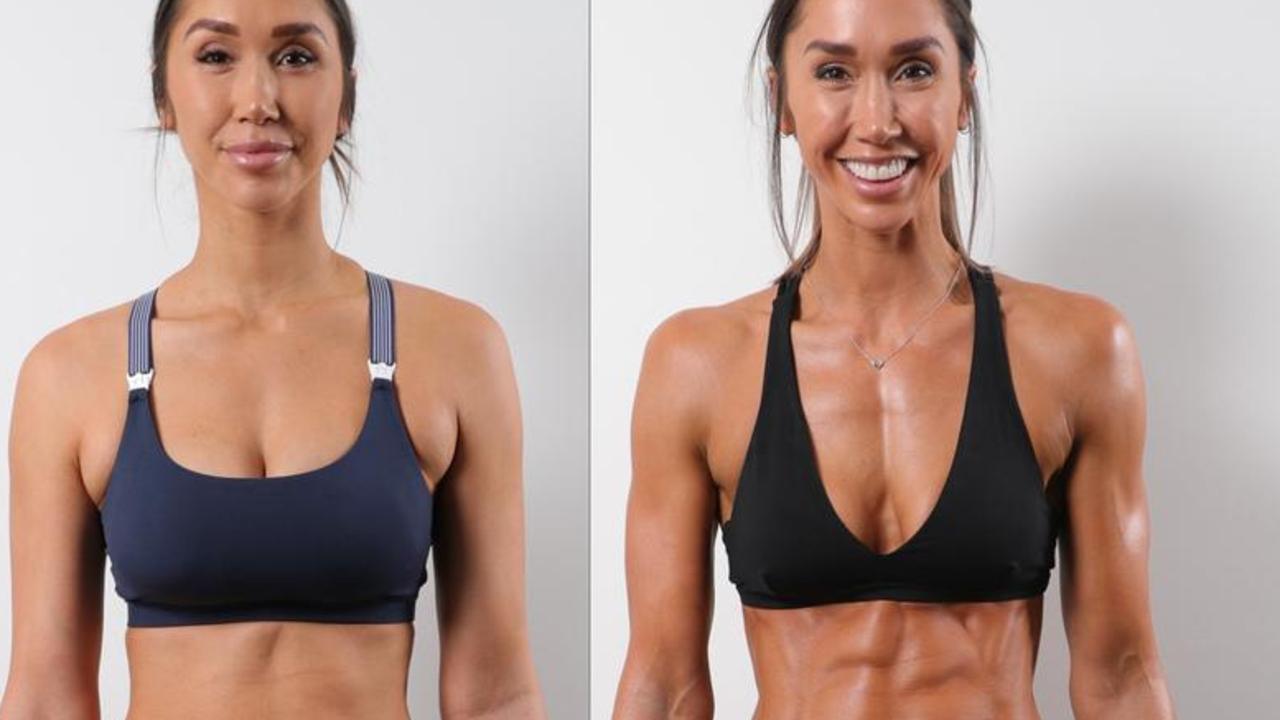Reduce risk of falls: Five exercises to improve your balance
A lot of people don’t realise that falling isn’t a necessary part of ageing – it’s often preventable. These are five simple exercises you can do at home to improve your balance.

Workouts
Don't miss out on the headlines from Workouts. Followed categories will be added to My News.
My nephew fell over recently. He’s 12 so he got back up, marvelled at the blood on his knee before his 10-year-old sister applied 12 bandaids for two cuts.
But for Australia’s ageing population, falling isn’t so easy.
Just one month earlier my aunty fell over.
She’s 58 and escaped lightly with two fractured ribs.
It will take eight weeks for her bones to recover and between three and six months for her confidence to slowly return.
And she’s not alone: one in three Australian’s over the age of 65 will have a fall this year.
The problem with falls, beyond any immediate injury, is the downward spiral they kickstart.
A fall often leads to less confidence. Less confidence leads to less physical activity. Less physical activity leads to less strength and balance.
Less strength and balance leads to more falls.
A lot of people don’t realise that falling isn’t a necessary part of ageing – it’s often preventable.
Physiotherapy-led exercise can prevent one in four falls in the community and half of falls in residential aged care.
Research shows that the best type of exercise is strength training and balance training and the best results are achieved when supervised by a physiotherapist, but all forms of exercise and even home programs can be effective.
So, here are five steps to strengthening your legs and lower your risk of falls:
1. Strength for your calves
Your calf muscles become more important to your gait and your balance with every year of age.
•This one is not a balance exercise – so hold onto a wall or a chair and slowly push off the balls of your feet to lift your heels off the ground
•Progress by going from two legs to one, or by doing two legs off the edge of a step
•Aim for two sets of 10 repetitions
2. Balancing on one leg
Single leg standing is a great measure of your balance AND a great exercise to practice
•Do this exercise barefoot and with a chair/table nearby that you can grab to correct your balance
•Stand on one leg with your eyes open, aim for 30 seconds at a time and a total of two minutes
•Progress this exercise by closing your eyes – but always be careful
3. Toe taps for balance
Stationary balance like the exercise above is great, but dynamic balance is equally as important
• Standing on the floor, place three cups on the ground, one in front of your right foot, one behind and one to the right side
• Stand on your left foot and tap of the three cups with your right foot five times each
• Swap side and to make things harder, move the cups further away
4. Squats
The humble squat is a simple but effective way to build strength in the biggest and most important muscles of your legs.
•Start with your feet shoulder width apart and bend your knees while raising your arms in front for counterbalance
•The movement should feel like you are sitting down on a seat
•Aim for two sets of 10, and to make things harder, move slower
5. Tandem walking
Clear a 10m long area, ideally with a wall on one side you can use for balance if necessary
•Walking along an imaginary line, stepping forward with your left foot only so far that your left heel is 5cm in front of your right toes. Then do the same with your right.
•To make this harder, make the gap smaller until you are walking heel to toe along the imaginary line.
TIPS TO GET THE MOST OUT OF EXERCISES
I recommend you do all of these exercises barefoot to maximise the sensation and feedback to the muscles, joints and ligaments of your foot. Remove the area of any obstacles and hard objects to make it safe.
These balance exercises should be done three days a week. You will notice that they are similar or the same as many strength exercises so they can be part of the same program.
*Warning: If you have already had a fall or have really poor balance – these exercises are not for you. If you are in this type of high risk category I strongly recommend you find a physiotherapist near you and start your exercise program with supervision.
Readers should consult their GP or physio before starting any exercise program. The above are suggestions that might be considered in consultation with a medical professional.
Tim Dettmann was a physiotherapist for 14 years and is the former director of Kieser Australia.
Originally published as Reduce risk of falls: Five exercises to improve your balance


